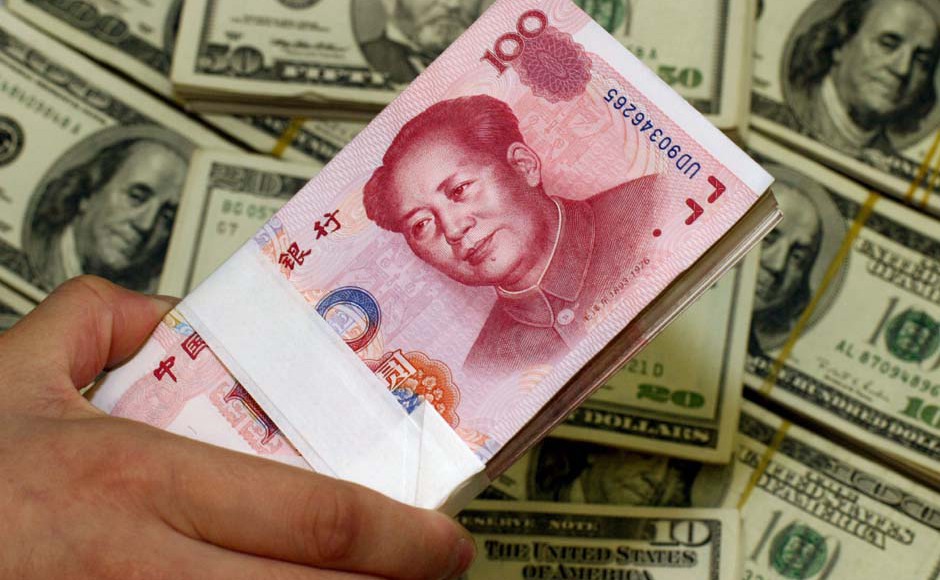-
Tips for becoming a good boxer - November 6, 2020
-
7 expert tips for making your hens night a memorable one - November 6, 2020
-
5 reasons to host your Christmas party on a cruise boat - November 6, 2020
-
What to do when you’re charged with a crime - November 6, 2020
-
Should you get one or multiple dogs? Here’s all you need to know - November 3, 2020
-
A Guide: How to Build Your Very Own Magic Mirror - February 14, 2019
-
Our Top Inspirational Baseball Stars - November 24, 2018
-
Five Tech Tools That Will Help You Turn Your Blog into a Business - November 24, 2018
-
How to Indulge on Vacation without Expanding Your Waist - November 9, 2018
-
5 Strategies for Businesses to Appeal to Today’s Increasingly Mobile-Crazed Customers - November 9, 2018
Growth slips below Beijing’s target
To achieve the goal of doubling the size of economy and per capita income by 2020, it needs to maintain 6.5% growth rate for next five years, economists believe.
Advertisement
And so, as the Communist Party has done since the 1950s, officials met in Beijing in October to hash out the plan to take the world’s second-biggest but now struggling economy from 2016 to 2020. The Chinese Premier, Li Keqiang, signaled that China may not achieve its targeted growth of 7% this year.
The communiqué said only that China will target “medium-high economic growth”, according to the official Xinhua news agency.
Xinhua also reported that President Xi had emphasised China’s plans to lift all of its poor out of poverty by 2020.
He said that the global community now has many misunderstandings of China due to lack of knowledge about the country.
China will seek to increase the yuan’s convertibility in an orderly manner by 2020 and change the way it manages currency policy, according to the Communist Party’s plan. Other priorities outlined in the document included increasing rail construction, setting up a fund to promote green development, protecting water resources, and speeding up digital media development.
But now as wages rise in China and factories move to countries where labor is cheaper, the country is looking to be more than just the world’s factory. The dramatic growth of the last 35 years has brought serious industrial overcapacity, a polluted environment, and declining productivity even as the workforce shrinks.
The Five Year Plan is China’s 13th since the foundation of the People’s Republic of China in 1949.
On Tuesday, a few critics expressed scepticism about whether any five-year plan could address the evolving complexity of China.
Hungary signed an agreement with China officially joining Beijing’s ambitious Silk Road network in June, becoming the first European country to join the project.
The combination of forces raises the possibility that if the government has settled on a new number, this may be last time that it sets a five-year growth goal.
Xu Shaoshi, chairman of China’s National Development and Reform Commission said that while there are all kinds of views about the Chinese economy, and persistent downward pressure, the country’s economic expansion will continue at a reasonable pace.
As China’s economy shifts its growth from being investment-led to being consumer-driven, Australia’s next growth opportunities are expected to increasingly come for the services sectors.
The annual plenary sessions of the Central Committee are part of the ritualised cycle of Chinese politics, giving top leaders a platform to win elite endorsement for their policies and to settle disagreements. The August devaluation raised concerns overseas that the Chinese economy was performing worse than had been acknowledged, and fuelled fears that Beijing was trying to make its exports cheaper to give it a boost.
Before the latest meeting, party propaganda depicted Mr Xi, who is also the general secretary of the party, as a visionary in the mold of Deng.
Advertisement
Societe Generale economist Wei Yao said the 22,000-word summary of the 13th five-year plan only provided a bit more colour to an earlier plenum communique, with the full plan to be released in March next year. At present, investment accounts for about 50 per cent of GDP (compared with only 15 per cent in the US).





























